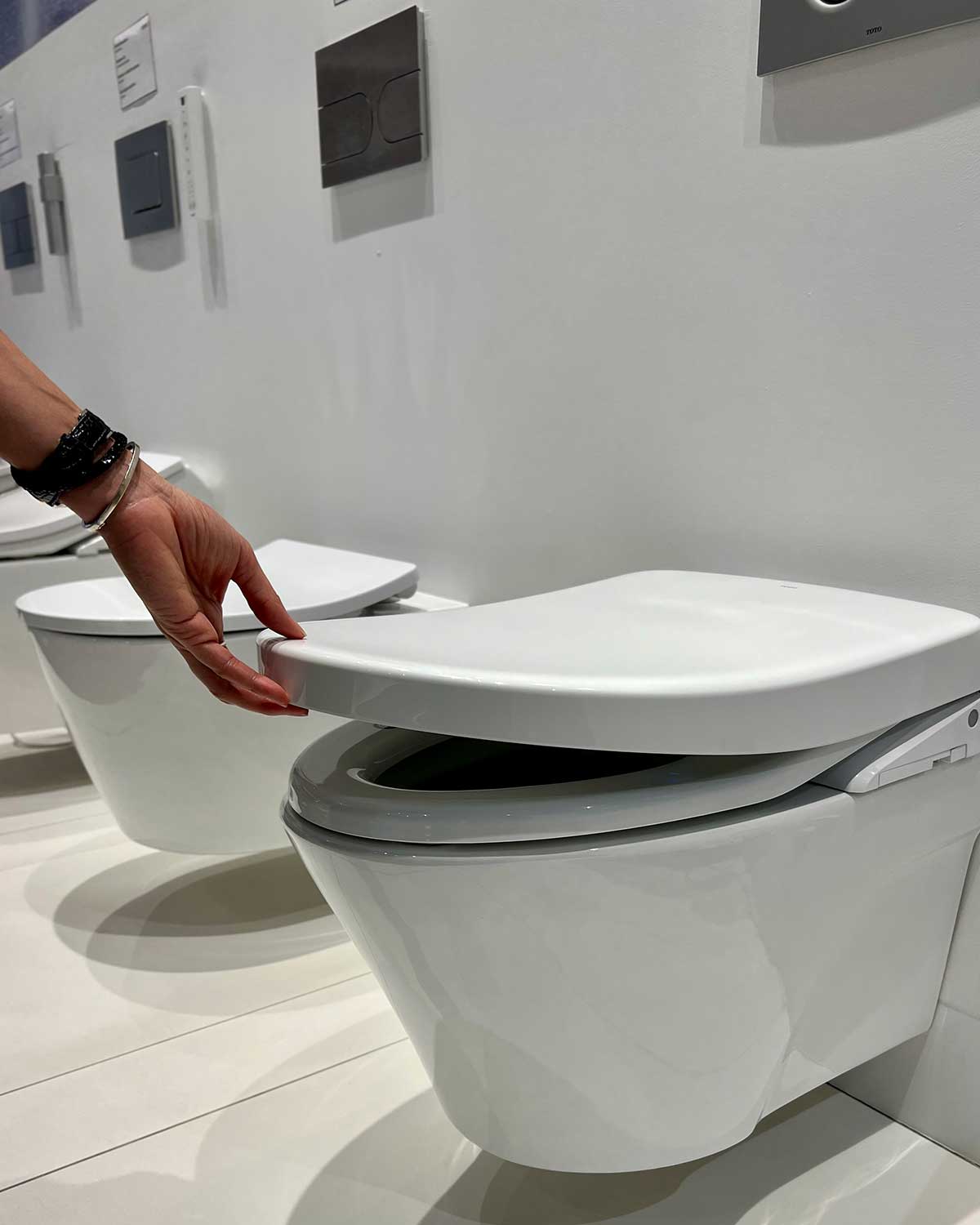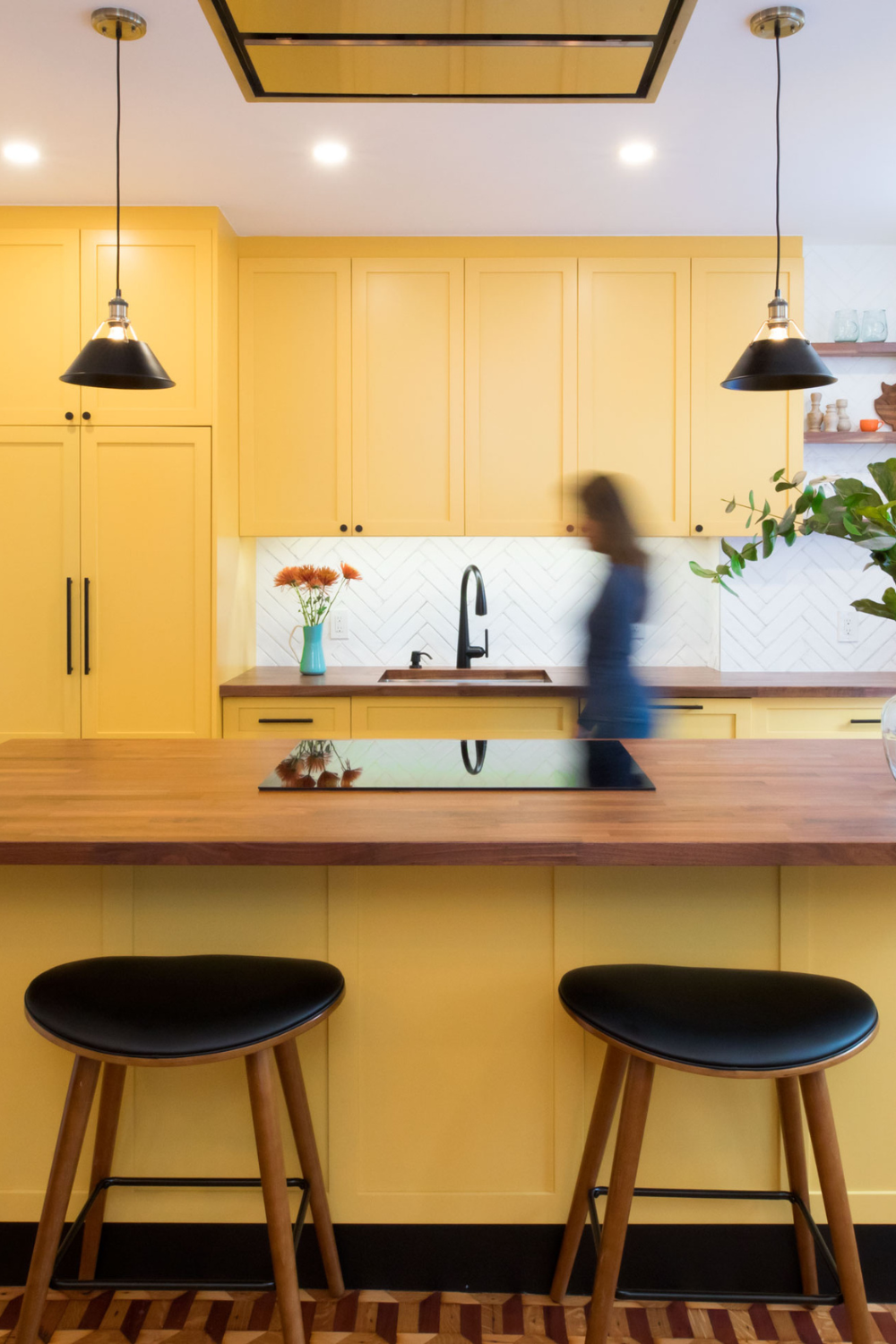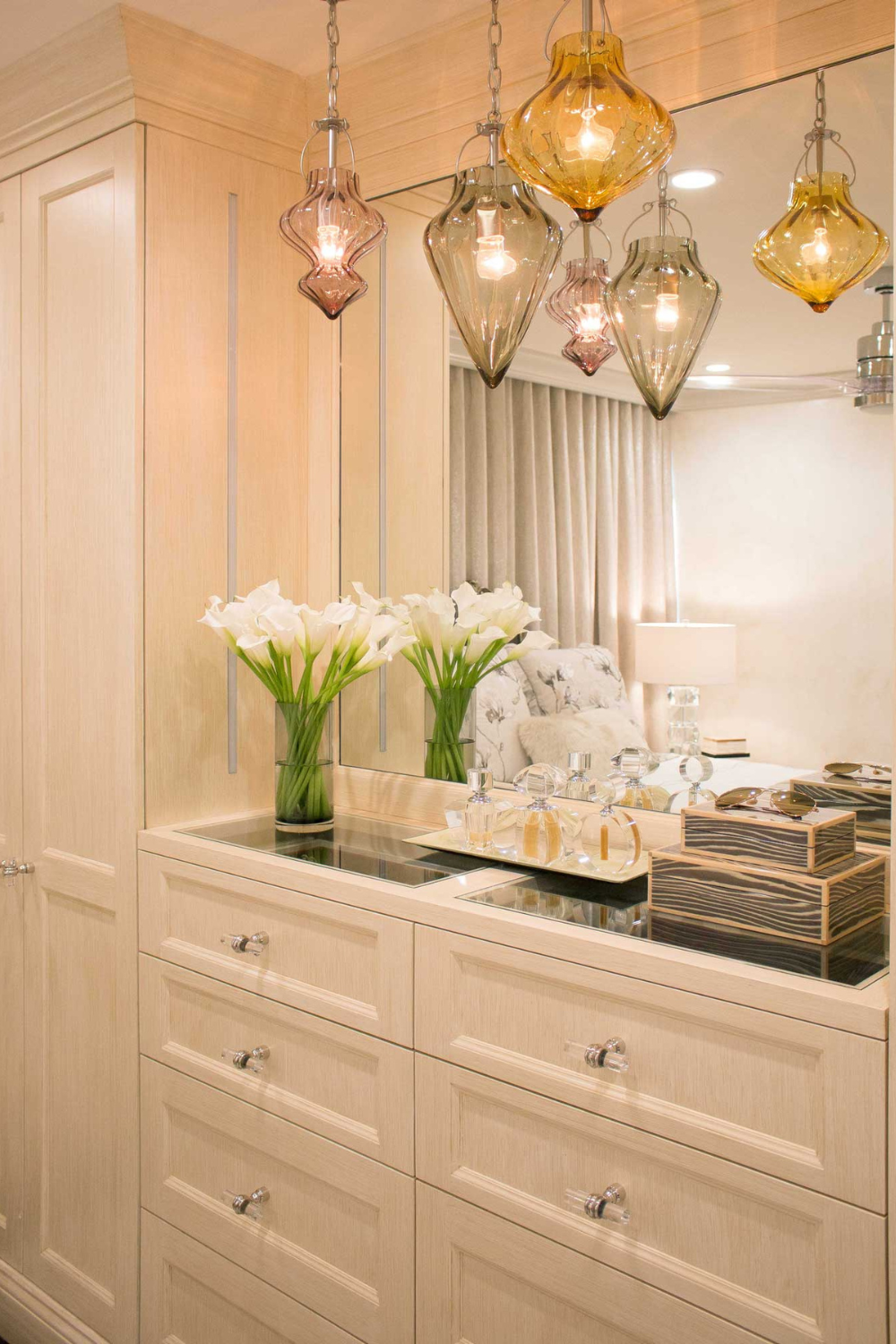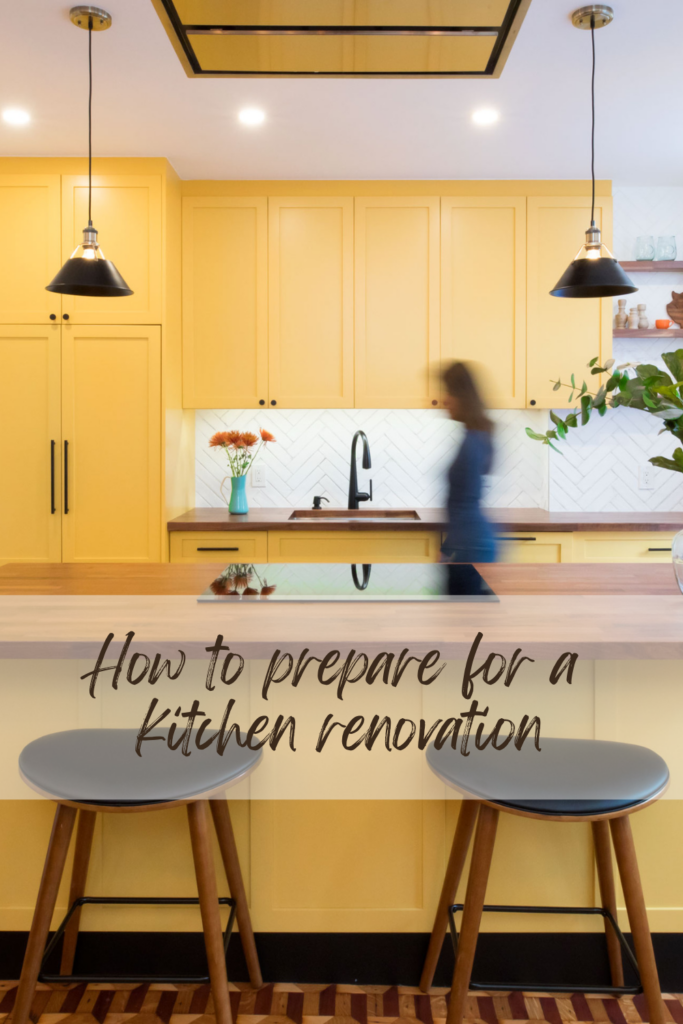
In this post, I’ll share my strategy for helping clients prepare for a kitchen renovation.
Before I begin, I’d like to start by saying that what I’m about to share with you applies whether you’re planning to manage the project yourself or hire an interior designer.
How to Prepare for a Kitchen Renovation
Preparing for a kitchen renovation involves more than just making decisions, it requires a clear vision of what you want. If you’ve experienced a renovation before, you understand how stressful it could be. With a well-defined vision, you’ll make decisions confidently, even when facing obstacles. Rather than abandoning the idea altogether, you’ll be empowered to consider alternative solutions that align with your initial goals and vision. While some adjustments or compromises may be necessary, having a clear vision will help you navigate these challenges with a steady mind.
Setting realistic expectations is vital to the success of your kitchen renovation and also your mental well-being.
The emotions you’ll experience during a kitchen renovation could be intense. If you’ve renovated before, you understand this well. If it’s your first time, don’t worry, you will get through it and be glad you did.
It’s important to maintain a balanced state and recognize that feeling stressed or anxious is normal. Any renovation is a major undertaking, so take deep breaths (and breathe out); and align yourself with professionals who can guide you through the process. It’s very tempting to hire your friend’s contractor, architect, or kitchen designer. Don’t hire them at face value. Interview them and make sure you both have similar communication styles and value systems. Although renovating is one of the most stressful experiences, it is also incredibly rewarding. Once the dust settles, both literally and figuratively, you will have a kitchen you love.
Once you start making decisions, you’ll gain confidence, and things will become easier, just like mastering any new skill. Many clients feel anxious because they can’t visualize the end result. I tell them, as I will tell you: trust the process.
I’ll guide you through the same process that I use with my clients. These steps are going to help set you up for success as you prepare for your kitchen renovation.
Step 1: Define Your Vision
Everyone has the ability to fantasize and daydream, even if you feel you are ‘uncreative.’ It’s a natural part of being human. Maybe you’ve thought, “I wish I had a kitchen to bake cookies in,” or “I’d love double ovens to create gourmet meals,” or “My dream is to have a beautiful kitchen where I can spend evenings preparing meals with my partner, sipping wine, and listening to our favorite music.” Perhaps you’ve imagined, “I want an espresso machine so I can feel like I’m in Italy every morning.” Do you see where I’m going with this? Take a moment and ask yourself: What do you want from this kitchen renovation?
The best way to prepare for a kitchen renovation is to have a clear understanding of what you want to achieve. This requires some self-reflection. If you find it difficult to figure out on your own, that’s okay, this is all part of the process, and I don’t want this to discourage you from setting a vision. I promise you’ll be happier if you do.
At my company, we begin every project with a Client Lifestyle Interview, designed to uncover what our clients truly want from their kitchen remodel.
To help you get you started, you can download The Kitchen Ultimate Planning Guide — which includes the same questions I ask my clients during the Client Lifestyle Interview.

Our Kitchen Ultimate Planning Guide offers expert guidance to help you confidently prepare for your kitchen renovation.
A quick note: being busy is not an excuse to skip self-reflection. Most of my clients are very busy people, and those who see the value in this step get the most out of the process. You’re about to make a significant financial investment, and I encourage you to make the most of it. A renovation is an investment in both your property and your quality of life.
I’m not one to sugarcoat things; I prefer to “keep it real,” as they say. When you embark on a kitchen renovation, you can expect to make hundreds of decisions. Yes, hundreds! These will range from major decisions like structural changes to finer details like the color and thickness of grout. Every choice will impact the overall functionality and aesthetics of your home.
Still with me? Great! I’m glad I didn’t scare you away. To prepare for what could be one of the best investments of your life, you need to confidently make these decisions. The key to doing that is having a clear vision of what you want. We live in a fast-paced world where everything seems urgent, but I believe in a thoughtful approach to design. You might be thinking, “I have a baby on the way, and we need to move in by a certain date,” or “I need this renovation done before the kids go back to school,” and that’s perfectly fine, you’ll just need to move a bit faster, but you cannot skip the step of setting a clear vision for your design project.
Step 2 – Take Inventory and Sort
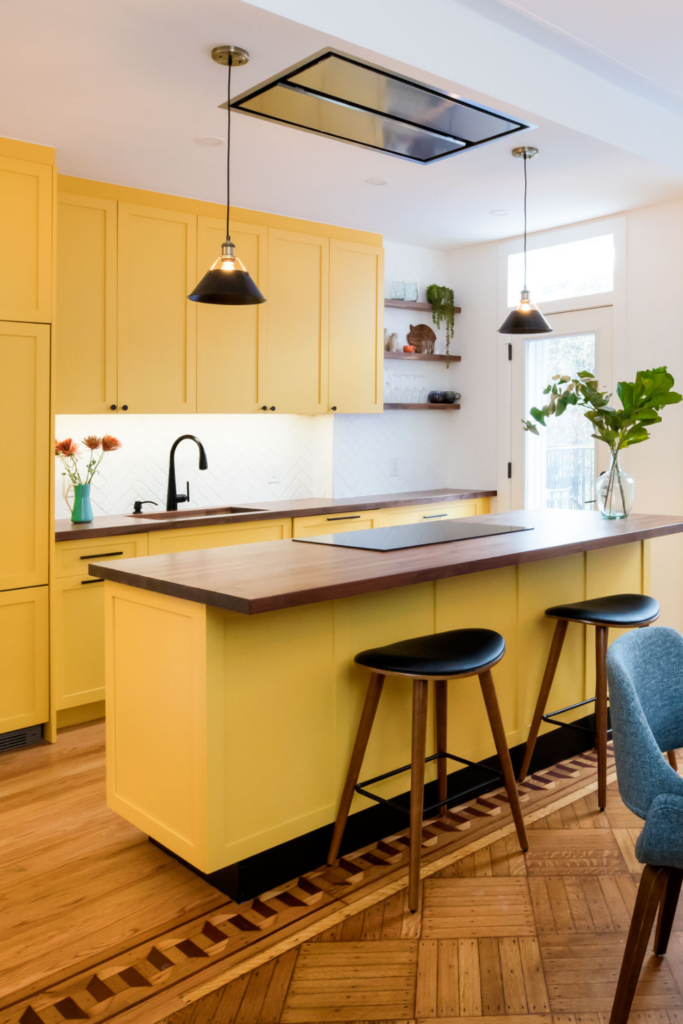
Organizing Your Belongings
Even if you’re a minimalist, you’ll still have items that need to be stored. The next step is to figure out how and where you’ll store your belongings. My approach to owning things is that they should add value or utility to your life, and you should be mindful of their impact on your space and finances.
In this step, make a list of everything you’ll want and need to store. Don’t rely on memory, stand in front of the area you’re inventorying and write down what you have, and what you want or need.
Are you satisfied with how these items are stored? Could there be a better way? For instance, let’s examine your food container situation. How would you like to store your food containers so you can easily find matching lids? Will you store them with the lids on (my preferred method), or stack them in size order and keep the lids separate? There are many ways to store containers and lids—find what works best for you.
Thinking, “But Claudia, this will take work”? Yes, it will. But it will be worth it. Don’t overthink it, just do it. The last thing you want is to finish your kitchen renovation and realize you forgot to create space for your favorite china that’s been in the attic or basement. Get what I’m saying?
I prefer to keep similar items together because “out of sight, out of mind” often applies. However, I don’t subscribe to the idea that everything needs to be perfect. I’m too busy for that, and striving for such meticulous neatness often adds more stress than joy. I simply group similar items together. On the other hand, if you find joy in keeping everything perfectly organized, I encourage you to go for it and have fun with the process.
In a kitchen, grouping by category means separating the following: dinner plates, salad plates, bowls, small drinking glasses, tall drinking glasses, wine glasses, spoons, forks, knives, oils, spices, cleaning supplies, dry goods like cans and boxed items, aluminum foil, parchment paper, storage containers, etc.
The goal here is to categorize by type so you know how much space you’ll need in your new kitchen. At this point, you’ll have an inventory list that will help you make decisions later on when space planning, choosing the interiors of your kitchen cabinets, and dealing with obstacles during construction.
Applying Your Vision
If you haven’t come across Marie Kondo’s book The Life-Changing Magic of Tidying Up, it might be a good place to start. She outlines a process for decluttering and organizing your home. I once had a client who was so afraid to part with some of their belongings that I suggested they hire a professional organizer before we could begin our work. My client and the organizer went through an entire house in a couple of days. She later told me that once she started sorting through her belongings, it became much easier to let go of things no longer needed or wanted. Many clients have shared similar experiences: although decluttering can be overwhelming at first, the process often feels incredibly rewarding.
To recap, after setting your vision, you’ll need to take inventory of your existing and future belongings. This information will help you determine how much space you need and how to use it effectively. For example, consider whether you want drawers or doors, adjustable shelving, pull-out shelves or trays, Lazy Susans or corner cabinets, built-in organizers, etc.
How will you apply your vision? For instance, if you plan to bake regularly and own five half sheets, where will you store them? A common spot is above the refrigerator, but does that work for you? Would it be better to store them in a base cabinet near the oven for easy access when baking cookies?
I encourage my clients to group similar items together within easy reach so that you can view everything in the same category without opening multiple doors or drawers. This approach minimizes the mental energy required to navigate your kitchen. When I need a specific item, I know exactly where to look without having to open several cabinets. It also helps prevent overbuying items because you couldn’t find them in your kitchen (which happens). After taking inventory, think about what might be missing from your new kitchen and add those items to your planning list.
Step 3 – Research
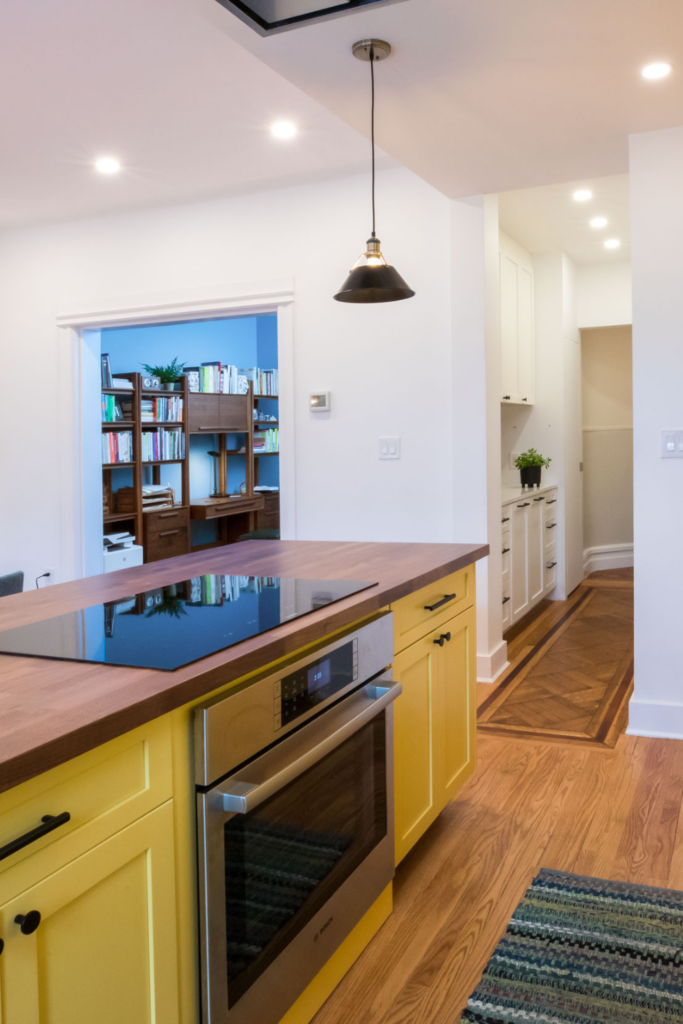
Yes, my friend, you need to do research before you start your layout. Before you can decide on your kitchen layout design, you’ll need to determine your appliance wish list. Do you want an induction cooktop or a gas cooktop? These two appliances require different energy sources and clearances to function properly and safely. In addition, you’ll also need to decide on the width and depth of your refrigerator. For example, do you prefer a French door refrigerator with a bottom freezer drawer or a side-by-side refrigerator?
Remember when I asked you to take inventory of everything? Do you keep your freezer full of frozen goods and need ample freezer space, or will a bottom freezer drawer suffice because you prefer to buy canned or fresh? The bottom line is to research the appliances you want so you can properly incorporate them into your kitchen layout. If you start with the layout first, you might need to reconfigure it because you didn’t account for proper clearances.
Step 4 – The Layout
Can you see why establishing a vision and understanding your wants and needs is crucial before starting space planning? Space planning involves creating a layout, so it’s essential to know what goals we aim to achieve. If you want to cook dinners with your partner while sipping on wine and listening to your favorite music, would you like a wine refrigerator and concealed built-in speakers in the ceiling? Would you want an island so that you each have counter space for cooking and prepping? Do you have enough room for an island, or could you use a movable cabinet instead? Your kitchen layout design will be determined by two factors: what you can actually fit in the space and what your aspirations are for the space.
This blog post aims to inspire you to begin your renovation journey on the right foot. Preparing for your kitchen renovation involves first setting a vision for how you’ll use your new space. The vision you set will serve as the guiding principle that helps you make decisions throughout the entire project.
If you’d like to learn more about my process, be sure to subscribe to my blog. I’d love to hear your thoughts, leave a comment and share your renovation goals with me. Happy renovating!
RELATED POSTS
As an Amazon Associate, this site may contains affiliate links and I can earn from qualifying purchases at no cost to you. View disclosure for more information.
I'm Claudia. Welcome to my Interior Design blog! I'm thrilled to share my expertise and passion with you. With over 20 years in the industry, I'm a Certified Interior Designer, holding an NCIDQ Certification, and an educator. Interior Design isn't just my career—it's my passion. Dive in to explore more about me. Click here to learn more!
Hi Friend!
Stay inspired—join our design community by subscribing to the blog today.
subscribe now
Other Posts You Might Like
Leave a Reply
©2025 Claudia Giselle Design | Interior Designer | Brooklyn, New York
Legal
BACK TO TOP
Testimonials
718-255-5949
Press
office@claudiagiselle.com
MENU
We create thoughtful, personalized interiors for those who value quality and beauty in every detail — serving NYC, Manhattan, Brooklyn, Long Island, the Hamptons, and the Hudson Valley (including Westchester and Dutchess County) & Beyond.
Timeless Classicism with a
Bold Touch of Elegance
Home
Services
Process
About
Blog
Portfolio
Scheudule a Consultation
GET IN TOUCH
Contact
